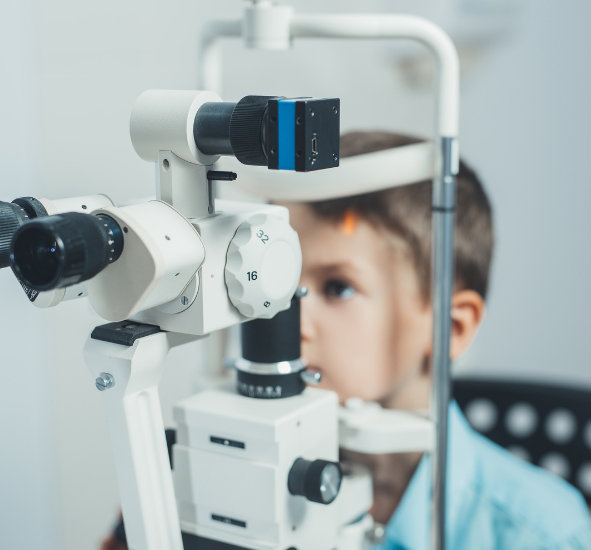Juvenile X-linked retinoschisis is a rare inherited retinal disease (IRD), primarily affecting boys and young men.
How is it identified?
The disease causes splits between the retinal layers, which can be seen as gaps on cross-sectional scans of the retina known as optical coherence tomography (OCT) images.
The retina split causes damage to the cells in that area, leading to localised vision loss. Although the part of the retina that is affected by the disease will have poorer vision, very few people with the condition will lose all of their vision.

What are the symptoms?
Affected boys are usually identified in primary school, but occasionally are identified as young infants. Most boys present with a mild decrease in central vision in primary school that may be subtle and not perceptible. They may continue to lose vision into their teens. Once they are adults, their vision often stabilises until they are in their 50s or 60s.
Juvenile X-linked retinoschisis patients are more susceptible to retinal detachment and eye haemorrhage (bleeding) than other people, and they should have regular examinations with an ophthalmologist (specialist eye doctor). When detected early, a retinal detachment can be treated surgically to prevent further vision loss.
Patients are also more susceptible to retinal detachment and eye haemorrhage (bleeding) than other people and they should have regular examinations with an eye doctor. When detected early, a complicating retinal detachment can be treated surgically.
What is the cause and how is it inherited?
The exact prevalence of juvenile X-linked retinoschisis is currently unknown, but it is thought to affect between one in 5,000 to 25,000 people. 1
The disease is usually caused by mutations in the RS1 gene, which is located, as the name suggests, on the X chromosome and inherited through from the mother. In some circumstances, female carriers can also experience symptoms.
What treatments are available?
Currently, there are no treatments available for juvenile X-linked retinoschisis.
If a patient develops a secondary issue, like a bleed or tear of the retinal tissue, these can be managed surgically by an ophthalmologist. Regular eye checks are vital to monitor for these changes.
A number of emerging treatments are being developed that may assist in the future.
